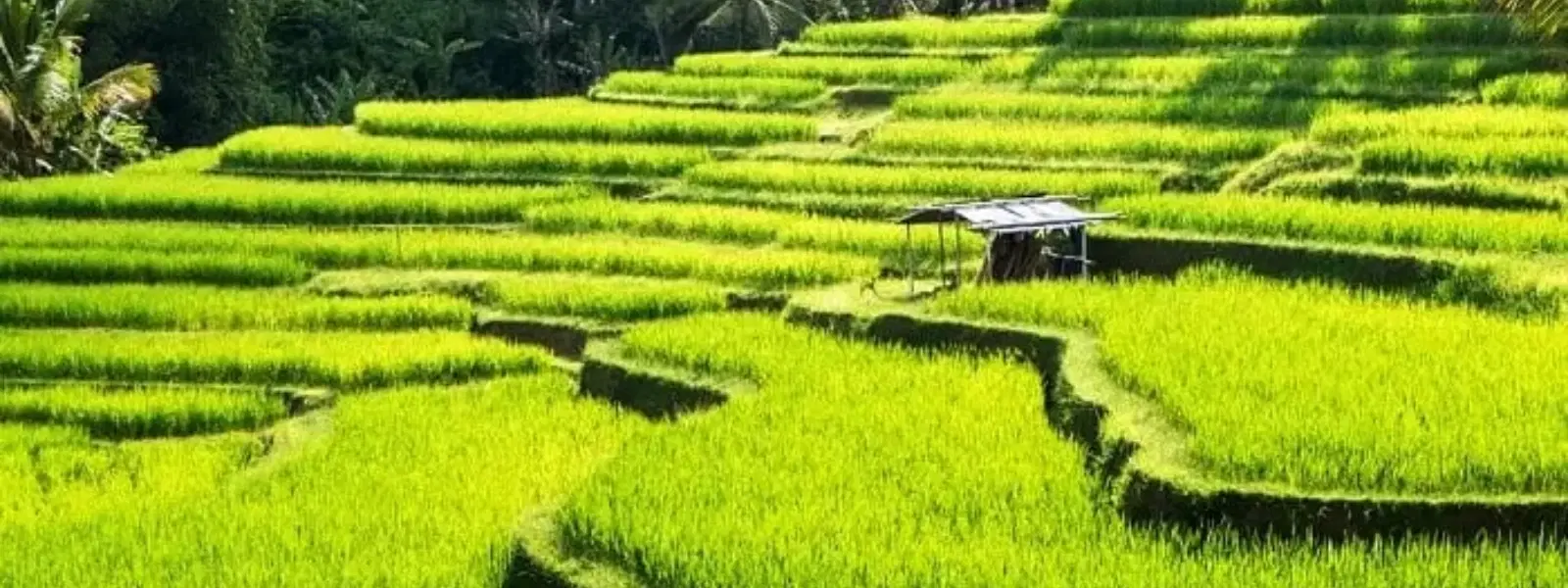
Flights
•04 min read

The lush, rolling panoramas of rice terrace valleys evoke images of a living canvas where nature meets human ingenuity. These remarkable landscapes are not only a testimony to centuries-old agricultural practices but are also a visual feast that stirs the wanderer within us. In this blog, we journey through 10 of the most stunning rice terrace valleys around the globe, revealing their unique characteristics, cultural significance, and scenic allure. Whether you are a young adventurer, a meticulous planner, a busy professional, or a luxury seeker, these timeless vistas offer a mix of raw beauty and deep-rooted tradition waiting to be discovered.
Nestled amid the verdant highlands of Bali, the Tegalalang Rice Terrace is famed for its lush greenery and the intricate subak irrigation system that has sustained rice paddy fields for generations. Tourists often search for "Tegalalang Rice Terrace price" or catch a glimpse of the famous "Ceking rice terrace swing" that offers a unique perspective of the cascading terraces. Visitors should note that a modest entrance fee applies, and early morning is the best time to take in the serenity before the crowds arrive.
Often hailed as the "Eighth Wonder of the World," the Banaue Rice Terraces are a UNESCO World Heritage site that stands as a marvel of both engineering and human spirit. Carved into the mountains by the Ifugao people over 2,000 years ago, these terraces are a testament to traditional rice cultivation. Their sheer scale and historical significance provide a glimpse into the enduring relationship between nature and culture.
The Yuanyang Rice Terraces in China offer a surreal visual spectacle during the irrigation season. The fields transform into a shimmering mirror, reflecting a patchwork of water and sky. As a UNESCO World Heritage Site, Yuanyang also serves as a cultural beacon, preserving the heritage of the Hani people and showcasing a symbiotic relationship between terrace farming and natural beauty.
In Vietnam, the Mu Cang Chai Rice Terraces are renowned for their breathtaking transformation during the harvest season. The vibrant golden hues capture the heart of photographers and travel enthusiasts. These scenic rice terraces also provide accessible hiking trails that offer panoramic views of the vast, tiered farming systems.
Sapa in Vietnam is synonymous with dramatic mountain rice terraces that cascade down steep slopes in an almost surreal display of nature’s artistry. Integrated into the fabric of local hill tribe culture, these terraces become especially picturesque during the planting and harvest seasons, providing a perfect stage for both nature lovers and photography enthusiasts.

The Longsheng Rice Terraces are famed for their distinctive dragon-back shape, winding gracefully over the hills. Steeped in history, these terraces closely intertwine with the heritage of the surrounding Zhuang and Yao minority villages. Their unique contours and hidden corners make them a true hidden gem for adventurers seeking off-the-beaten-path experiences.
Less crowded than Tegalalang yet just as mesmerizing, the Jatiluwih Rice Terraces offer expansive panoramic views that stretch over rolling contours. Recognized as part of Bali’s UNESCO Cultural Landscape, these agricultural terraces provide a more secluded retreat where travelers can immerse themselves in the lush surroundings and appreciate the traditional methods that continue to thrive here.
The Batad Rice Terraces captivate visitors with their amphitheater-like structure nestled in a remote and tranquil setting. Known for their steep ascents and breathtaking vistas, these mountain rice terraces offer an escape into nature for those longing for a taste of serenity away from bustling urban centers.
While not dedicated to rice cultivation, the Maras Salt Terraces in Peru share striking similarities with traditional terraced farming landscapes. Their tiered structures and cultural heritage mirror the intricate artistry found in rice paddy fields, offering fascinating insights into different forms of agricultural ingenuity.
Madagascar, with its lush hillsides, reveals yet another dimension to terraced farming. These lesser-known irrigated rice fields are remarkable for their age-old tradition of hillside rice farming, captivating those with a penchant for discovering uncharted natural beauty.
Rice terrace valleys are much more than just scenic backdrops. They are at the heart of traditional rice cultivation, sustaining local communities and preserving ancient cultural practices. The harmonious blend of human labor and natural resources has fostered a community spirit that breathes life into these landscapes.
Beyond their cultural significance, terraced farming landscapes play a critical role in conserving nature. These agricultural terraces help prevent soil erosion, conserve water, and nurture local biodiversity. By mirroring natural slopes, they offer an ingenious solution to some of the most pressing ecological challenges faced by modern agriculture.

Rice terrace valleys are not just agricultural marvels—they are living museums of cultural heritage, passed down through generations to sustain both people and the planet.
The state of Ifugao in the Philippines is renowned for its terraced rice fields, particularly the Banaue Rice Terraces.
The entrance fee for Tegalalang Rice Terrace is approximately IDR 15,000–20,000 (around $1–$1.50 USD), but prices may vary.
The Banaue Rice Terraces in the Philippines are often considered the most famous, earning the title "Eighth Wonder of the World."
Five notable rice terraces include Banaue (Philippines), Tegalalang (Indonesia), Yuanyang (China), Mu Cang Chai (Vietnam), and Longsheng (China).
The best time to visit rice terraces is typically during the planting or harvest seasons, as the fields are either lush green or bathed in golden hues.
The diverse rice terrace valleys around the world are more than just picturesque scenes. They represent centuries of tradition, community effort, and an inherent connection to nature that has sustained both people and the environment. From Asia's iconic landscapes to hidden gems and beyond, exploring these terraced farming landscapes offers an unforgettable experience that enriches the soul while championing sustainable, traditional agriculture.